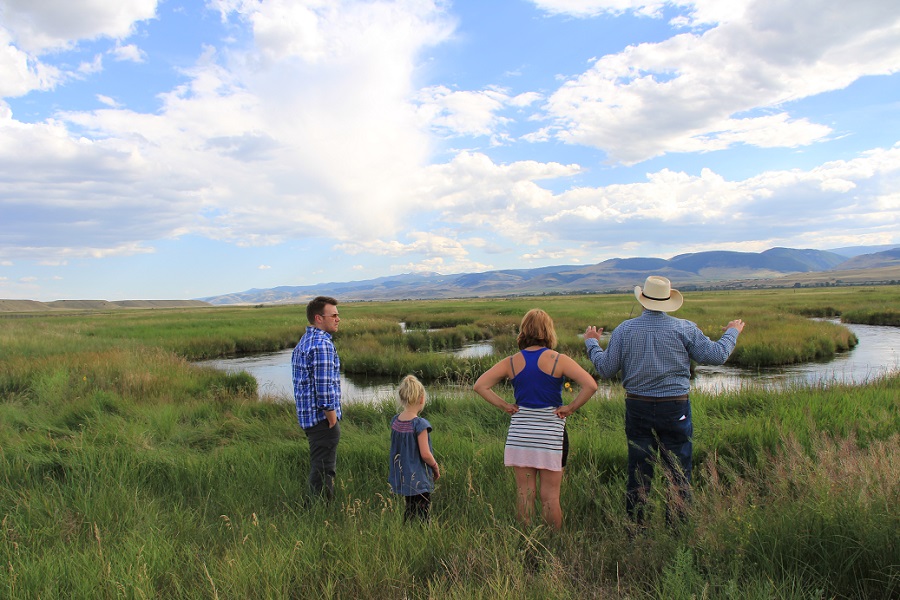Jeff Laszlo shares his passion for wetland ecology with visitors to the O’Dell Creek restoration project in Montana’s Madison Valley.
From European monarchs to the Federal Government, over 300 years of land management policy edicts and incentives encouraged the draining and destruction of over 100 million acres of wetlands. For early European settlers and colonial governments, wetlands were seen as malarial swamps or obstacles to agricultural development that needed to be channeled or filled. From 1850 to 1950, state and federal agencies even worked to drain the Everglades.
Today, of course, we recognize the Everglades as a national treasure. In addition to its national park status, the Everglades is a UNESCO World Heritage Site. National park designation for the Everglades marked an important shift from what parks historian Al Runte describes as “monumentalism” to the protection of unique ecosystems. When the Everglades were set aside for preservation, not everyone appreciated the ecological value. “A swamp is a swamp,” noted prominent conservationist William Hornaday. While he conceded that “the saw-grass Everglades Swamp is not as ugly and repulsive as some other swamps that I have seen,” he declared it “a long ways from being fit to elevate into a national park.”
We have come a long way. Today, wetlands everywhere are valued for providing fish and wildlife habitat, for their important role in enhancing water quality, and for their carbon storage capacity. It is for these reasons that efforts are being made to restore and protect wetlands throughout the United States.
The Nature Conservancy’s Bird Returns program creates pop-up wetlands for migratory birds. For-profit conservation and mitigation banks provide incentives for landowners to restore wetlands to provide habitat for endangered frogs and butterflies. And private landowners act as stewards of more than 70 percent of America’s wetlands. Whether through public-private partnerships like the O’Dell Creek restoration project, or beverage companies investing in water conservation, wetland conservation is a clear priority for many Americans. But is it a priority for the federal government?
Jonathan Adler outlines a potential obstacle to private wetland conservation under the government’s new definition of “waters of the United States” (WOTUS).
Among other things, the Clean Water Act prohibits the discharge of pollutants, defined to include clean “fill material” such as dirt, in the nation’s waters without a permit, and the WOTUS rule defines waters to include many wetlands. This means that even the most well-intentioned conservationists may need a federal permit to undertake ecological restoration on private land. Why does this matter? Because obtaining such permits can be costly and time-consuming—and failure to comply can bring criminal penalties. And as has been shown in the context of endangered species, excessively punitive regulations can discourage voluntary conservation on private land.
To the extent that the new WOTUS rule subjects private conservation efforts to federal regulatory control, it may discourage private conservation. There are more than 100 million acres of wetlands in the United States, and approximately three-fourths of these are on private land. This means that insofar as federal regulatory efforts discourage private conservation, they can have significant, unintended consequences. The unrestrained expansion of regulatory jurisdiction may be good for federal agencies, but it’s not always good for conservation.
Well-intentioned policies drained half of America’s wetlands. With wetland conservationists hard at work from coast to coast, it is important to consider whether environmental rules and regulations help or hinder wetland restoration.




